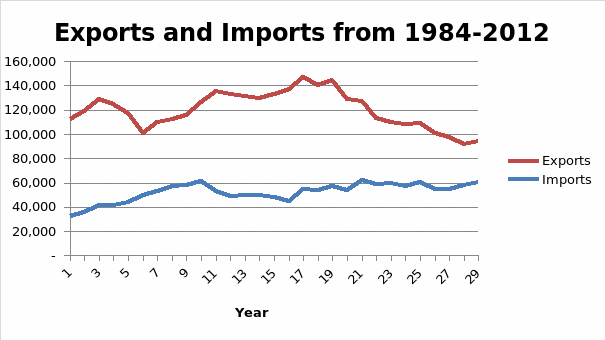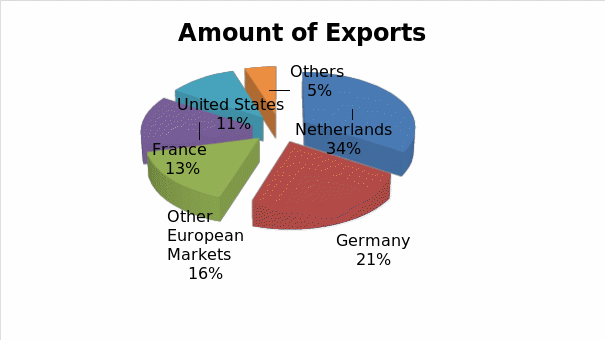Introduction
The UK enjoys huge oil reserves from its ageing North Sea Continental Shelf. The oil industry is the country’s major economic driver. In the financial year 2011/2012 only, the oil and gas industries contributed over £11.2 billion in corporate taxes, accounting for about 25% of the total corporate taxes paid during this period (The Rac Foundation 2012). The oil sector supports about 500,000 jobs across the country, hence one of the largest sectors (UK Government 2013).
The global oil prices have been rising by the day as the demand continues to surge. The production and supply of oil in the UK has been rising slower than the demand side of the market (The Rac Foundation 2012). While the prices of crude oil are determined largely by the global fluctuations in the global supply and demand, internal factors in the UK have far-reaching implications on the UK’s oil prices. The demand of crude oil has been majorly fueled by numerous global and country-specific factors (James & Speight 2012). Global economic activities and the intensity of oil-driven sectors have been found to influence the price of crude oil. In addition, future expectations have been on the forefront in informing the anticipated demand of oil (UK Government 2013).
When analyzing trends in oil prices, it is essential to understand the supply and demand trends in the long run and in the short run. When observed from short run supply perspective, it is clear that the immediate demand for crude oil is an important function of the price equation (The Rac Foundation 2012).
Short run supply is an essential function of the available oil reserves, prospects of exploration and the probability of discovering new oil reserves.
A huge amount percentage of UK’s crude oil is extracted in the Continental Shelf (UKCS). The UK Continental Shelf delivers over half of the UK’s total crude oil demand.
The demand for oil in the UK is determined by the extent to which various key sectors consume oil in driving the economy. The total oil consumption is a function of sector-specific demands. For instance during 2011, the UK’s transport sector accounted for 75% of the total oil consumed in the country (UK Government 2013). With the transport sector being one of the key economic drivers, the UK’s oil consumption rose steadily in 2011 compared to the same period in 2010. The UK’s industry sector is the largest consumer of oil accounting for 17.8% in 2011, a figure that rose significantly from 2010 (Smith 2011). However, the global economic crisis coupled by a stagnant industry sector due to Euro crisis have been connected to the drop in the prices of oil in the last few years. On the other hand, domestic use accounted for 3.8% of the total oil consumed in the UK in 2011 while other sectors accounted for 2% of the country’s overall demand (UK Government 2013).
Other factors that will determine the direction that oil prices will take are related to prevailing economic and financial conditions both current and future. However, the role of technology and research will play a significant role in influencing the overall price trends. Thus, moving forward weather, innovation and growth in population are likely to have far-reaching implications on the future of the oil sector (Krichene 2008). Having said that, there are specific factors that have consistently impacted the supply and demand of crude oil in the UK (Smith 2011). The following discussion seeks to explain key factors that will continue to shape the trends of oil supply and demand.
Factors Determining Oil Prices in the UK
The capacity to produce crude oil
Surveys show that the global supply side has remained lower than the demand of crude oil in the UK for the last decade. Numerous factors can help explain this situation, including the amount of crude oil that non-OPECT countries produce every year. Depletion of oil reserves and a slow pace at which new oil fields are being established in the UK and other non-OPEC countries have critically affected the UK’s oil supply (Krichene 2008). Interruptions that have emerged from outside of the UK due to geopolitics in the Arab Spring, for example, have had far-reaching impact on the ability of UK to control the prices of oil in its market (Smith 2011).
The role of Petroleum Exporting Countries (OPEC)
In 1960, there was a rising call for the formation of an organization that will address the concerns of oil exporting countries. The efforts yielded the OPEC with an objective o protecting the concerns of oil-rich countries against global interference. The OPECT members own about 72 percent of the world’s total oil reserves. Since its formation, OPEC has had a significant impact on the market fundamentals (supply and demand) affecting oil prices. OPEC countries accounted for 42 percent of the total oil produced and supplied in 2011(House of Commons Energy and Climate Change Committee 2009). The fact that OPEC countries determines which way oil prices go, other countries, including United Kingdom have little influence in influencing local, regional and global oil prices (Industrial Systems Research 2013). Since OPEC members meet to revise oil prices and determine the new price ceilings, the organization has been a pointer of how prices should behave in the UK (House of Commons Energy and Climate Change Committee, 2009).
Existing Crude Oil Reserves

There is an intimate connection between the available or proven oil reserves and the demand of oil. The capacity of oil fields relative to the actual market demand can cause a market perception that might have long run impacts on the demand and supply of oil (Industrial Systems Research 2013). The effect of perceived balance between the supply side and the demand side of the oil market cannot be overstated—ideally, if the market learns of reduced or depletion of the proven oil reserves, oil prices are more likely to rise due to projected reduction in the supply of oil (House of Commons Energy and Climate Change Committee, 2009).
Table: Crude Oil Export destination

The UK’s oil exports have been reducing significantly for the last five years. This trend can be interpreted in several ways: first, and perhaps most significant interpretation is that the UK oil reserves have been declining for the last five years. Currently, the European countries account for the largest UK’s major export market for crude oil, which accounts for over 80 percent of UK’s total oil exports (Carollo 2012). Although the US is also a major importer of UK’s crude oil, Netherlands, France, and Germany are the largest export destinations (Papahl & Richter 2009).
Dollar exchange rate/ the value of U.S dollar
All transactions related to trading or crude oil use the US dollar. Therefore, a weak or a strong US dollar can impact oil prices in a big way. For example, a weaker dollar means low oil prices for countries that do not trade in dollars (MacLeay, Harris, Annut 2010). This means that a weaker dollar can increase the demand of oil, which subsequently pushes up the global oil prices. On the other hand, a stronger US dollar relative to other currencies means the prices of oil will be on the rise, hence reducing the demand of oil. When viewed from the UK’s perspective, oil prices have been rising because of the weakening of the dollar over the past few years (MacLeay, Harris, Annut 2010).
Prospects or actual exploration of oil
The exploration of oil, costs of research and the cost of production are important in understanding oil prices and future trends. These factors affect the supply of crude oil. For example, the fact that expectations of oil exploration declined has caused an upward trend in the prices of crude oil. In addition, the rising costs of production have an impact on the overall price trends (Carollo 2012). Because of this, the UK’s oil prices have remained high at all time because of reduced exploration activities and rising costs. These factors have caused a constant increase in the price of oil. In the same breadth, the market sentiment in the UK has also impacted the prices (MacLeay, Harris, Annut 2010).
National Supply and Demand
Countrywide supply and demand for oil determines the price. If there are factors that may impede smooth supply of oil, for example, bad weather conditions, oil prices will rise temporarily. The number of suppliers in a particular region can influence local oil prices (Industrial Systems Research 2013). Since oil is a major source of fuel used in the transportation sector, increased buoyancy in the transport industry can cause a rise in the demand for oil (Carollo 2012).
Currency Exchange Rates
The prevailing exchange rate between the US dollar and the UK currency can have a huge impact on the price consumers pay in the UK. If the UK’s currency strengthens against the dollar, oil prices will drop and the opposite is always true. Since world’s currencies are influenced by geopolitical, social and economic situations, new information about different events quickly infiltrates into exchange rates and subsequently affects the price of oil (Carollo 2012).
Available inventories
Inventories signal the perception of the market and its effect on the balance between short-term demand and supply. This can affect future oil prices in the country. The available inventories are crucial in balancing the impact of perceived market demand and supply. Where the market has low stock levels, the market will be more sensitive to the small changes in the supply or the disruptions in the demand of the commodity (Carollo 2012).
Divergence of the Brent and WTI indices
Although the UK and the US have been increasing their inventories steadily since 2011, both countries have been affected by factors that caused a downward trend in the volume of inventories. In the UK, for example, crude oil supplies from the old North Sea Crude fields, which influence the trends of Brent index, have been declining rapidly over the past ten years (Carollo 2012). When combined with challenges posed by the American embargo on oil coming from Iran, the supply of oil to European countries has caused an upward trend in the Brent index (Industrial Systems Research 2013). Since the Brent crude oil index is the most used measure of prices in the European countries, varying trends of this index have impacted the price of crude oil in UK and its major trading block (Europe). Since the US and Canada have been pushing to increase their Inventories, and given that they are among the major importers of UK’s crude oil, the overall demand has declined causing a reduction in the export oil prices (Carollo 2012).
References
Carollo, S 2012 Understanding oil prices a guide to what drives the price of oil in today’s markets. Chichester, Wiley, West Sussex.
House of Commons Energy and Climate Change Committee, 2009, UK offshore oil and gas: first report of session 2008-09, authority of the House of Commons London, The Stationery Office Limited.
Industrial Systems Research, 2013, Manufacturing in Britain: A Survey of Factors Affecting Growth and Performance, Industrial Systems Research, London.
James G & Speight, J G, 2012 The Chemistry and Technology of Petroleum, CRC Press, New York.
Krichene, N, 2008 Crude Oil Prices: Trends and Forecast, International Monetary Fund, London.
MacLeay I, Harris K, Annut A, 2010, Digest of United Kingdom energy statistics, TSO, London.
Papahl, N & Richter, A 2009 Oil Price Developments – Drivers, Economic Consequences and Policy Responses. GRIN Verlag, München.
Smith, N J 2011 The sea of lost opportunity North Sea oil and gas, British Industry and the Offshore Supplies Office. Amsterdam, Elsevier.
The Rac Foundation 2012 ‘UK Fuel Market Review’, Web.
UK Government 2013 ‘Industrial Strategy: government and industry in partnership’ Web.